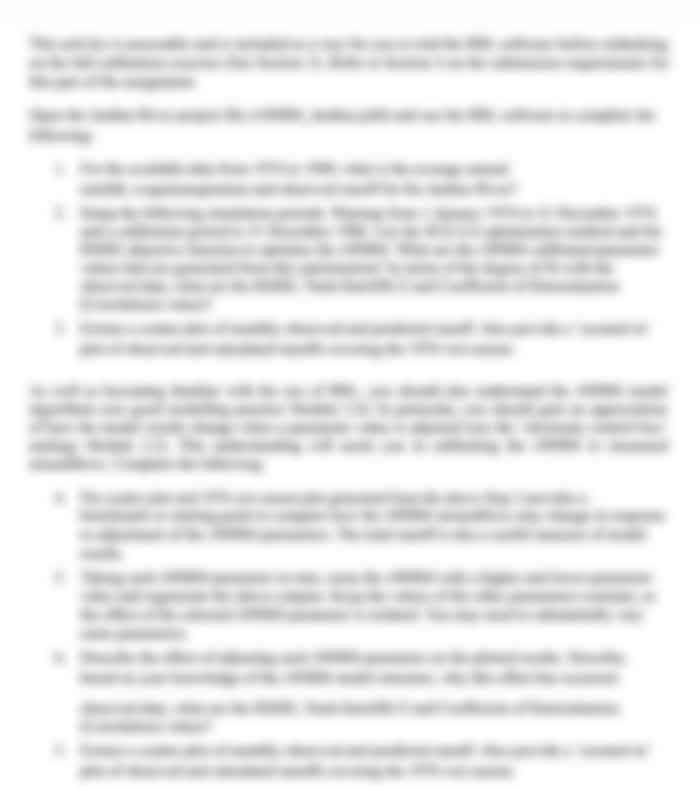SISFFIT053 Support healthy eating for individual fitness clients assignment
- Subject Code :
SISFFIT053
- Country :
Australia
-
Assessment Task 1: Short Answer Questions
Question 1
Bounce Fitness is a premiere fitness centre in Australia. Learn more about their Fitness Digital Information Storage and Security Policy and Procedure by accessing the link below.
Digital Information Storage and Security Policy and Procedure
Answer the questions below about Bounce Fitness procedures for maintaining client records.
a. Identify the one employee who has access to client information.
b. Identify the filename format to be followed for digital information.
c. Identify the one location where all digital information must be saved for security.
d. Identify how sensitive information must be saved.
Question 2
Access the Bounce Fitness Privacy and Confidentiality Policies and Procedures to answer the questions below about procedures for maintaining confidentiality of client information.
Privacy and Confidentiality Policies and Procedures
Review the sections about the disclosure, security and access of personal information.
a. Identify what employees must do before disclosing a members personal information for referral letters to health professionals.
b. Identify the precaution that Bounce Fitness conducts to comply with legal responsibilities regarding security of personal information.
c. Identify the two personnel from whom employees must ask permission to access Bounce Fitness information.
d. Identify the one location where discussion of information must be carried out.
e. Identify what must be ensured if discussion of information is to be done remotely.
Question 3
Listed below are techniques used to establish trust with fitness clients.
In 50 words or more, briefly explain how a fitness instructor can use each technique to support change in a clients eating habits
a. Treating clients with respect
b. Setting small goals with clients
c. Matching clients communication style
Question 4
Listed below are techniques used to build rapport with fitness clients.
In 50 words or more, briefly explain how a fitness instructor can use each technique to support change in a clients eating habits.
a. Finding shared interests with clients
b. Practising active listening
c. Being empathetic
Question 5
Access Fitness Australias guidelines for nutrition advice within scope of practice of fitness trainers in the link below and answer the following questions.
Nutrition Advice within Scope of Practice for AusREPs
See parts 1 and 2 in the link provided below.
a. Briefly describe the purpose of the Nutrition Advice within Scope of Practice for AusREPs.
b. Outline the two practices related to providing nutritional advice that are within the scope of practice of fitness instructors.
c. Outline the eight examples of nutritional activities and advice that are within the scope of practice of fitness instructors.
d. Outline the five examples of nutritional advice that are outside the scope of practice of fitness instructors.
Question 6
Answer the questions below about providing nutritional information consistent with the Australian Dietary Guidelines and its support resources.
a. Explain why fitness instructors are prohibited to provide nutritional advice that are not in the Australian Dietary Guidelines (ADG).
b. Explain why the nutritional information that fitness instructors provide must be consistent with the information in the Australian Dietary Guidelines.
c. Explain why fitness instructors must use the Eat for Health Educator Guide when providing nutritional advice to clients.
d. Explain why fitness instructors must use the Australian Guide to Healthy Eating (AGHE) when providing nutritional information to clients.
Question 7
Complete the table below.
Identify at least one potential consequence for fitness instructors providing nutritional advice outside of scope of practice for each type of consequence below.
Briefly describe each identified potential consequence.
Types of Consequences
Potential Consequences
Description of Consequences
a. Professional
b. Legal
c. Financial
Question 8
Listed below are client requests that need referral to medical and allied health professionals.
In 50 words or more, explain how a fitness instructor must respond to each client request below.
a. Detailed nutritional assessment
b. Personalised meal planning for weight gain and weight loss goals
c. Recommendations for specific popular diets that do not align with Australian Dietary Guidelines
Question 9
Listed below are client situations in providing nutritional advice that need to be referred to medical and allied health professionals.
In 50 words or more, explain how a fitness instructor must respond to each client situation in providing nutritional advice below.
a. Advice on meal plans for weight loss and weight gain
b. Advice on nutritional requirements for high-intensity, high-volume and high-level sports performance
c. Taking on specific specialty diets
d. Taking nutritional supplements for physical performance
e. Taking nutritional supplements for improvement of general health
f. Eating specialized foods for medical conditions
g. Using ergogenic aids
Ergogenic aids refer to any substance, practice or devices that help enhance energy production, use or recovery to improve physical performance significantly.
h. Questions about nutrition and medication interactions
Question 10
a. Nutrient deficiencies
b. Nutrient imbalances
c. Food intolerance reactions
d. Food allergy adverse reactions
e. Negative food-drug interactions
f. Nutrition confusion
g. Financial burden of product recommendations
Question 10
Answer the questions below about relative energy deficiency in sport (RED-S).
a. Briefly explain how a person can be exposed to RED-S.
b. Identify at least three physical effects of RED-S.
c. Identify at least three behavioural effects of RED-S.
Question 12
In 50 words or more, explain how providing nutritional advice outside a fitness instructors scope of practice can have a negative impact towards a clients existing health conditions.
Question 13
Review the following fitness industry eating disorder publication below:
MHFA Eating Disorder Guidelines
Eating Disorders: Recommendations for the Fitness Industry
Answer the questions below about information and recommendations contained each of these publications.
MHFA Eating Disorder Guidelines
a. Outline the five physical warning signs of a developing eating disorder according to the What are eating disorders? section.
b. Outline the six actions to avoid when approaching someone with an eating disorder according to the Approaching someone who may have an eating disorder section.
Eating Disorders: Recommendations for the Fitness Industry
c. Outline the five recommendations that must be used when working with clients who have symptoms of an eating disorder, exercise disorder or muscle dysmorphia.
d. Explain why exercise protocols for clients must be developed in collaboration with medical or allied health professionals.
Question 14
Complete the table below about fitness industry eating and exercise disorders.
Identify at least one behavioural warning sign for each of the following disorders.
Briefly explain how a fitness instructor must respond to each of the identified behavioural warning signs.
Disorders
Behavioural Warning Sign
Response to Warning Signs
a. Eating disorders
b. Excessive exercise disorders
c. Muscle dysmorphia
Question 15
Answer the questions below about key nutritional terms.
a. Define the key nutritional terms listed below:
i. Diet
ii. Healthy eating
iii. Nutrition
iv. Nutrients
v. Macronutrients
vi. Micronutrients
b. Briefly explain how the body uses nutrients.
Question 16
Review the Australian Dietary Guideline from the link below:
Australian Dietary Guidelines
Answer the following questions based on the Australian Dietary Guidelines.
a. Outline the five principal recommendations for healthy eating.
b. Complete the table provided below about the different food groups.
i. Describe the characteristics of each food group listed below.
ii. Describe the nutrients that each food group contributes to the diet.
Food Groups
Description of characteristics
Description of nutrients
i. Vegetables
ii. Fruit
iii. Grain
iv. Protein
v. Dairy
c. In 50 words or more, differentiate Foundation Diets from Total Diets.
d. Complete the table below by identifying the following:
The five essential food groups suggested by the Australian Dietary Guidelines.
Recommended amount or range per standard serve in kilojoules (kJ) of each food group for a healthy adult.
Number of recommended daily serves of each food group.
Food Group
Amount per Serve (in kJ)
Number of Daily Serves
i.
ii.
iii.
iv.
v.
e. Complete the table below about discretionary foods.
Identify the four types of discretionary foods.
Explain why each of the four types of discretionary foods must be avoided.
Type of Discretionary Food
Why Each Type Must Be Avoided
i.
ii.
iii.
iv.
Question 17
Explain how to use each method of collecting information about daily eating patterns of clients listed below.
a. Consultation
b. Journaling
c. Personal tracking
d. Answering questionnaires
Question 18
Briefly explain how to use each tool for collecting information about daily eating patterns of clients listed below.
a. Daily diet record
b. Eating habit questionnaire
c. Food tracking application
Question 19
-
Outline the five steps in assessing a clients daily eating patterns against the Australian Dietary Guidelines.
Question 20
Briefly explain how each method listed below can be used to evaluate support that fitness instructors provide to clients.
a. Client evaluation questionnaires
b. Informal conversations with clients
c. Self-reflection on clients difficulties in understanding information
d. Self-reflection on clients difficulties in implementing advice.

